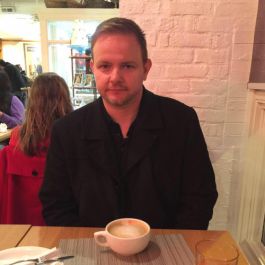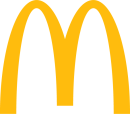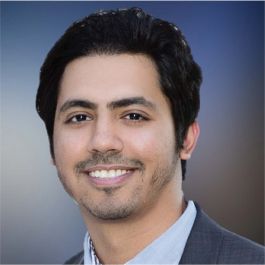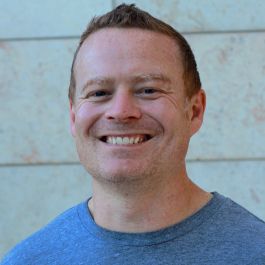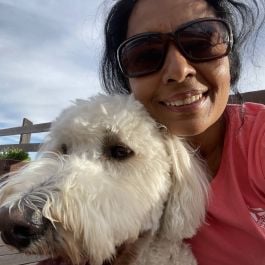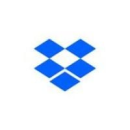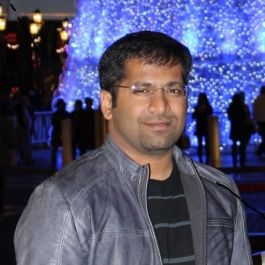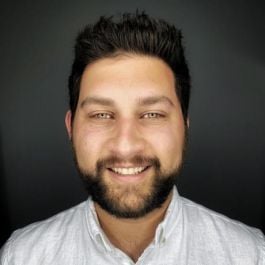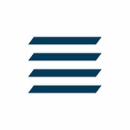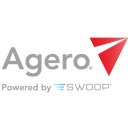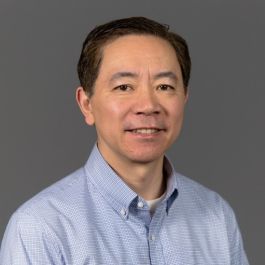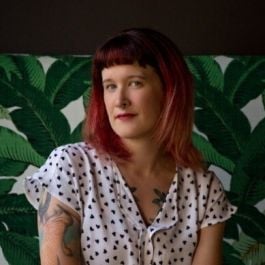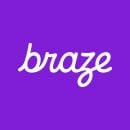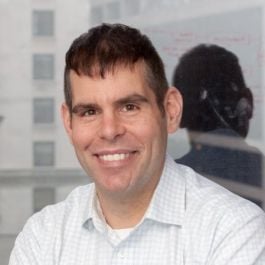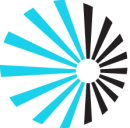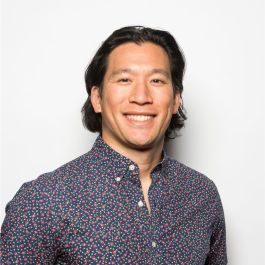“Most engineers’ real passion is for solving problems,” said engineer, designer and leader James Dyson in an interview with Forbes.
Dyson’s team has solved everyday problems with innovative products, starting with the bagless vacuum cleaner, and his leadership principles have pushed the team at his eponymous company to continue to seek innovative solutions.
He describes his management style as “letting people go out and try their ideas, getting them totally involved and unleashing new thinking.”
Dyson and his team don’t fear failure but embrace it, and that mindset has led to the development of another familiar product.
“You never really know what working on one problem may lead to — often it can become the solution to something completely different and very exciting. That’s part of the fun,” he told Forbes. “Our Airblade hand dryer is a prime example, a failed application in one technology led to a fast and more effective hand drying solution.”
No matter what problems engineers are trying to solve, though, one element that can push the project to its full potential is a great engineering leader. From engineering managers to CTOs, a successful engineering leader can help team members level up their skills, uncover new possibilities in tech and help advance goals for the entire business.
Built In heard from 11 engineering leaders about their approach to leadership and the work that they’re most excited to accomplish with their teams.
Featured Companies
McDonald’s Global Technology is the tech organization for the global fast-food chain, building proprietary tech using tools like AI, IoT and edge computing.
What’s your professional background, and why were you brought on to lead this team?
After working at a major tech company for 11 years followed by a short sabbatical to focus on my own projects, I landed at McDonald’s. I joined because the culture is changing at McDonald’s, big time. McDonald’s is focusing on innovation and technology. It’s revolutionary and very cool. The company is really seeing the value of engineering in general.
I was running the ads at a major tech company and was on the team that did machine learning — predicting ad traffic to make better, accurate predictions for ads — but after 11 years, I was ready for something new. Then the pandemic hit, and a team leader here asked me if I’d like to come and build some teams because they were hiring. McDonald’s is such a part of our social fabric. It’s where you go when you’re a kid and get Chicken McNuggets and fries. It’s a part of our shared experience, and the role offered interesting use cases and exciting problems to solve.
How would you describe your approach to leadership, and how do you plan on building team culture?
I focus on making innovation and creativity the center of our work. To come up with our best and most creative ideas, I try to strike a balance between a more formal business posture — deadlines and results — and creativity and flow. A walled garden where engineers feel safe to experiment and are empowered to create whatever they think is necessary. But I also keep things agile and boxed, so we can deliver. We’ll come to a place in the middle where there is room for some playing around, and not everything we make has to stick.
McDonald’s is constantly moving and transforming, and we’ve been able to translate that culture to engineering — there are thousands of things happening.
“A walled garden where engineers feel safe to experiment and are empowered to create whatever they think is necessary.”
What project are you most excited to tackle?
In the 21 years I have been in tech, I have never seen so many options available to us as engineers. It’s just mind-blowing. We’re finally getting to this place where the software is catching up with the hardware. It’s dizzying. For instance, a lot of people don’t realize that the McDonald’s app has hundreds of microservices behind it, and tons of tech employees put that together. It’s massive and amazing behind the scenes.
Cisco Meraki offers cloud-managed IT solutions, including wireless, switching, security and mobile device management.
What’s your professional background, and why were you brought on to lead this team?
My journey began over a decade ago when I graduated from Syracuse University with a master’s in telecom and network management. This laid the foundation for my career, leading to my first job at Cisco as a technical marketing engineer, where I focused on testing cutting-edge Wi-Fi solutions and delivering technical presentations at Cisco Live.
As my career progressed, I found myself drawn toward core engineering, wanting to delve deeper into problem-solving within the organization. This desire led me to join the Meraki quality assurance engineering team. Over time, my leaders recognized my aptitude for devising technical solutions that enhanced our QA processes and contributed significantly to the team’s overall output. This acknowledgment led to my promotion as an engineering manager, where I could leverage my expertise to guide, inspire and grow the team. Over the years, I witnessed the team’s remarkable growth spread across multiple geographical locations within the United States and India. As I continued to demonstrate leadership and strategic vision, I was entrusted with greater responsibilities, eventually leading to my appointment as the head of the entire Meraki Wireless QA team.
How would you describe your approach to leadership, and how do you plan on building team culture?
As a leader, I am committed to nurturing talent, fostering collaboration and driving continuous improvement to ensure our team remains at the forefront of quality assurance in this dynamic landscape of Wi-FI technology. I understand that effective leadership begins with a clear understanding of why we do what we do, which serves as the foundation for all actions and decisions.
Through my own individual journey, I got introduced to four career guiding principles: communication, execution technology and leadership. I adopted these principles to build our team mission on ownership, stability, productivity and accountability — these have now become the cornerstones of our QA team culture.
Although our team has evolved over the years, the core values based on trust, collaboration and mutual respect have remained intact. Credit goes to all senior and new team members who collectively strive hard to not only recognize the value of existing cultural norms, like open communication and data-driven execution, but also cultivate a positive, inclusive culture where the team celebrates achievements together while creating a sense of belonging for each member.
“Although our team has evolved over the years, the core values based on trust, collaboration and mutual respect have remained intact.”
What project are you most excited to tackle?
We recently embarked on a journey of team convergence for all wireless engineering groups into one big family, effectively bringing many teams together. I’m excited to be one of the leaders at the forefront of this major initiative to pave the way for our next big thing while addressing any challenges it brings. I recognize the significance of building a unified team around common vision, values and goals geared towards meaningful outcomes for our teams. I feel teams thrive better in an environment where every member feels valued and empowered to jointly contribute with their unique skills and perspectives. I’m optimistic this will help achieve a clear sense of purpose that inspires us to deliver simplified customer solutions.
Generative AI is another major initiative that I’m thrilled about. I see AI as having game-changing potential for all aspects in Wi-Fi QA testing. We are actively working to develop AI-based applications to simplify tedious processes and boost overall productivity across all our testing phases. I’m enthusiastically looking forward to a revolutionized form of QA testing powered by AI to improve user experiences and optimize quality in Wi-Fi technology.
VSCO is a photography app that offers creative tools, advanced photo and video editing capabilities and a community for creators.
What’s your professional background, and why were you brought on to lead this team?
I’ve been working in tech for over 20 years. I started out building games for Xbox, Playstation, Mac, PC, Facebook canvas, iOS, Android and web at places like Electronic Arts, 2K Games, Riot Games, Zynga and Zwift. I’ve seen a lot of platform shifts and specialized in large-scale distributed services that run massive multiplayer online games. Beyond powering the technology for these experiences, the game industry is about empowering content creators to bring worlds alive, both internal artists and external customers. With VSCO, we are on a similar mission — empowering our photographers, nurturing their creativity so they can make it. For me, it was a natural overlap with the work I’ve done in the past that made me excited to go on this mission with this team.
How would you describe your approach to leadership, and how do you plan on building team culture?
My approach to leadership is about finding the overlap in: the highest-leverage work we can do for our customers, our employees and for ourselves in our own individual career development. Finding this sweet spot creates the maximum business and professional growth. The other big emphasis to me is focusing on team — believing together we go farther than we do alone. The best teams resemble a great jazz band, where everyone has a part and magic happens when you mature to the point you can improvise and riff off of each other.
“The best teams resemble a great jazz band, where everyone has a part and magic happens when you mature to the point you can improvise and riff off of each other.”
What project are you most excited to tackle?
I’m really excited about our launch of Hub, which is just the beginning for how we plan to help photographers “make it.” Hub is like LinkedIn for creatives, helping the best photographers in the world focus on their craft and land great gigs with top brands and agencies. Most photographers find their work through networking, and being a solopreneur is hard. Technology can help solve this. We plan to be the home for professional and aspiring pro photographers to build their business around their core creative talent, spending more time doing what they love.
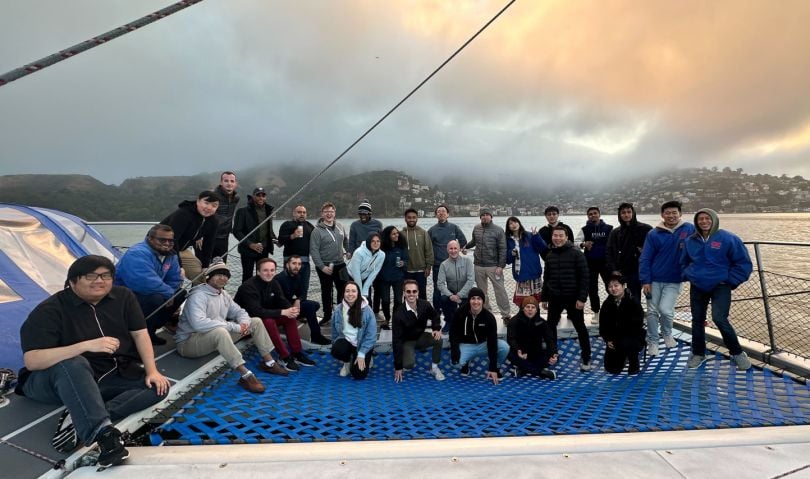
Dropbox provides cloud storage, file synchronization and personal cloud software to enable seamless file sharing and collaboration.
What’s your professional background, and why were you brought on to lead this team?
I’ve spent about 20 years building and managing software, both as an individual contributor and later as a manager. In January 2020, I joined Dropbox’s Storage team after primarily working in larger companies focused on software tools for chip designers. Hearing about Dropbox’s excellent engineering culture sparked my interest in joining.
Shortly after starting, I realized the smaller company size offered unique advantages aligning with what I sought in my next job — owning impactful projects, moving quickly and delivering results. The pace felt perfect! Dropbox Storage operates at an impressive scale, led by a small-yet-powerful team. I had the opportunity to work on highly impactful projects and thoroughly enjoyed my time there.
In 2023, my mentor approached me about a role in the Developer Productivity team, a significantly more complex opportunity. Throughout my time at Dropbox, I have been lucky to be stretched outside my comfort zone and have thoroughly enjoyed the learning that came with it.
How would you describe your approach to leadership, and how do you plan on building team culture?
I see myself as a people-first leader. To me, culture is critical towards the success of an org and might be the most important ingredient towards a high-performing team. I invest a lot of time meeting my team members, understanding what works well and what doesn’t, and absorbing their feedback.
Culture shows up in how we set our goals and hold a high bar for achievement, which in turn creates growth and learning opportunities for team members, in addition to delivering business impact. Embracing failures and learning from them is routine during retrospectives, fostering a blameless culture and reinforcing a growth mindset. I prioritize celebrating team wins, big and small, as the challenges we’re addressing for our customers are often complex and take time to execute.
Besides cultivating culture internally, I emphasize its importance externally. I dedicate time to building partnerships with stakeholder teams, empathizing with their challenges, and assisting where possible. I strongly believe that a strong culture powers strategy forward, yields happy customers and business results.
What project are you most excited to tackle?
I am really excited about tackling test efficiency this year. This is a challenging problem both technically and organizationally, which will require solving challenges at multiple levels across Product and Platform organizations, involving many teams. Solving this problem will enable developers to build and test their code faster, which directly improves development velocity.
Aligning work across multiple teams which cross org boundaries also means aligning varying priorities for each organization. It is really energizing to see that there is wide agreement in rallying forces to improve test execution speed at different levels of the stack. We have had some early wins thus far, and I’m excited to continue making a dent in this challenging space.
Box is a cloud content management and file-sharing service for businesses, facilitating secure collaboration and workflow management.
What’s your professional background, and why were you brought on to lead this team?
My journey with Box started five years ago. My keen interest in knowledge and content management and information retrieval systems led me to work at both large and small companies in this space before joining Box, where I built planet-scale platforms for managing various types of content and metadata. This included building platforms for enterprise content management, content marketing, discovery, recommendations and audience intelligence. Joining Box after that was a no-brainer.
Moreover, joining the metadata domain at Box felt like coming home. Working at Box has given me the opportunity to lead teams working on innovative solutions for uniquely challenging problems, while also ensuring that individual team members’ growth never takes a back seat. In many ways, Box still operates like a startup with new areas of ownership constantly emerging. This makes each quarter feel like a new start, brimming with possibilities and opportunities for making an impact.
“In many ways, Box still operates like a startup with new areas of ownership constantly emerging. This makes each quarter feel like a new start, brimming with possibilities and opportunities for making an impact.”
How would you describe your approach to leadership, and how do you plan on building team culture?
My goal — and the goal of my leadership team — is to create an environment where each individual feels a strong sense of belonging and ownership and is fully committed to the mission and vision for the team. We achieve this by forming small and nimble teams that operate independently. These small cohesive units have clear missions, are provided the right context and are empowered to define their own goals. They are measured on how rapidly they innovate, the outcomes they deliver for our customers and the impact they have on our company’s success.
On an individual basis, we prioritize fostering a growth mindset. We continuously push ourselves to expand our knowledge and explore new opportunities so that we are well-prepared to overcome future challenges as they arise. To ensure this, each team member is regularly asked three questions. If any answer is not an enthusiastic “yes,” immediate action is taken to address the situation. The three questions are: Are you excited about your work and its future? Does your work challenge you and provide opportunities for personal growth? Do you feel supported in both your daily tasks and your goals for professional development?
What project are you most excited to tackle?
We’ve been busy building the next generation of cloud-based enterprise content management systems for a couple of years now — one that is intuitive, flexible, scalable and performant. With the advent of large language models and generative AI, we believe the very nature of work has changed, and as a result, we’re accelerating some of this work and kicked off a major initiative to deliver Box 3.0 — The Intelligent Content Cloud!
According to IDC, 90 percent of an organization’s data is unstructured, which means that it requires manual effort to analyze or utilize the information stored in these unstructured files. The main objective of this new initiative is to unlock the value hidden within this unstructured content and enable organizations to leverage it just like they do with their structured content — in relational and analytical datastores. This can be achieved without having to invest in manual and error-prone processes. By leveraging advanced metadata capabilities and BoxAI, we aim to power intelligent and automated content workflows.
The Federal Reserve Bank of Boston is one of twelve regional banks in the Federal Reserve System, focusing on monetary policy, supervision and financial services in the New England region.
What’s your professional background, and why were you brought on to lead this team?
As I reflect on my journey from a developer to a leader in cybersecurity, I’m reminded of the diverse paths that have led me to where I am today. From biology and military service to physics and math, I’ve had the privilege of working with individuals from various backgrounds who share a passion for cybersecurity.
My academic journey began at California State University, Sacramento, where I pursued a Bachelor of Science in computer science with an emphasis in cybersecurity. This program was designed under the Scholarship for Service program sponsored by the National Science Foundation and the Department of Homeland Security. The curriculum equipped me with a robust technical foundation. It instilled a sense of responsibility to contribute effectively to the security domain.
My career trajectory took a turn when I joined the Federal Reserve, where I began to shift my focus from general software development to specialized roles in cybersecurity. This transition was challenging and exhilarating, pushing me out of my comfort zone and into strategic security planning and implementation. One of the pivotal projects in my career was my involvement with FedNow, the Federal Reserve’s initiative to modernize the national payment system. My role began even before the initial build of FedNow. I collaborated with teams from the San Francisco and Kansas City Feds, the Board and other system partners to prototype what would eventually lay the foundation for FedNow’s architecture.
Working on the prototype of FedNow allowed us to deeply engage in setting the security requirements for our architecture and the software lifecycle development process. Once we started the official build process, we were able to try out things before making it a standard for FedNow. Operating within a highly secure environment, we regularly consulted with numerous security experts to benchmark our designs and processes. It was a proud moment when our team’s efforts were recognized for scoring higher in maturity compared to most other security teams in the benchmark studies.
Thinking back, I’m reminded of the importance of adaptability, lifelong learning, and the willingness to engage with new challenges. The path from a technical developer to a strategic leader in cybersecurity illustrates the dynamic nature of this field and the endless possibilities for those willing to navigate its complexities.
“The path from a technical developer to a strategic leader in cybersecurity illustrates the dynamic nature of this field and the endless possibilities for those willing to navigate its complexities.”
How would you describe your approach to leadership, and how do you plan on building team culture?
As a leader in cybersecurity, I emphasize a collaborative approach that positions our team as a “yes and” force within the organization, actively facilitating business objectives while ensuring robust security. It’s easy to say no — the most “secure” system is a system that is shut off. My approach to work, in any role, has always been rooted in diversity of thought, always pushing to get the right answer, never focusing on being right. I always aim to do the right thing at the right time by anticipating potential issues and evolving our practices to align with current and future business needs. Those who have worked with me often find me asking them to disagree with me, even if they don’t, in pursuit of what we may have missed. A “diversity in thought, creativity in approach” is our goal. I’m fortunate to have other leaders like Kristina Mise, Vincent Lally and Frankie Roa who share the same vision.
We are committed to excellence and innovation in our field, advocating for a fail-fast approach in our research and development efforts. This mindset allows us to embrace rapid prototyping and iterative testing, which is crucial for adapting swiftly to new technologies and threats. We ensure that our team continuously learns, providing the latest training and resources to stay on the cutting edge of cybersecurity developments.
Integrating agility into our security practices makes us more responsive and efficient, quickly adapting to new challenges and opportunities with innovative solutions. This agility helps us maintain the security and resilience of our systems while supporting the dynamic needs of our organization. Our joint leadership style ensures that our team is not only equipped to handle the complexities of cybersecurity but also contributes positively to the strategic objectives of our business, reinforcing our role as a critical enabler of organizational success.
What project are you most excited to tackle?
FedNow has a fantastic engineering team that can do anything and a leadership team dedicated to security. This combo makes me very excited for FedNow’s future. I’m excited to work on scaling security challenges, which I know may be exacerbated by AI ubiquity. We also face hiring challenges in this space, and we need to identify individuals who want to focus on complex issues and dedicate themselves to service and giving back to a public institution. I think we have arranged a foundation and culture for security that will serve us for many years to come.
If you are interested in working with us, look at our open postings. Even if you are trying to break into cybersecurity, our Security Champion program can kick-start your journey.
Agero provides roadside assistance, accident management and connected vehicle services to automotive and insurance companies.
What’s your professional background, and why were you brought on to lead this team?
I began my journey in technology back in 2008, primarily focused on custom Oracle stored procedures. Over time, my interests evolved, leading me to transition into Rails development. However, it wasn’t until around 2012 that I found myself migrating toward DevOps. The reason for this shift was my dissatisfaction with the deployment processes associated with the software I was developing. Since then, I’ve immersed myself in all things DevOps, finding fulfillment in both its principles and practices. In 2014, I took on leadership roles, guiding teams toward the successful implementation of the DevOps philosophy. I find great satisfaction in leading teams to embrace and excel within the DevOps framework, ultimately fostering efficiency and innovation.
How would you describe your approach to leadership, and how do you plan on building team culture?
When it comes to managing a DevOps team, I adopt a holistic approach that uses a healthy balance of technical expertise with interpersonal skills and strategic thinking. This entails establishing clear visions and objectives for each project while fostering an environment of open communication throughout the day. I firmly believe in empowering team members to make decisions and take ownership of their tasks — I see this as instrumental in cultivating a positive team culture characterized by accountability and collaboration.
“I firmly believe in empowering team members to make decisions and take ownership of their tasks.”
What project are you most excited to tackle?
One of the most exciting initiatives we’re currently working on is implementing automatic code deploy and rollbacks, paving the way for a blue/green deployment model. This deployment model holds tremendous promise as it significantly minimizes downtime and enables us to detect and address issues proactively, ensuring that our customers are never impacted.
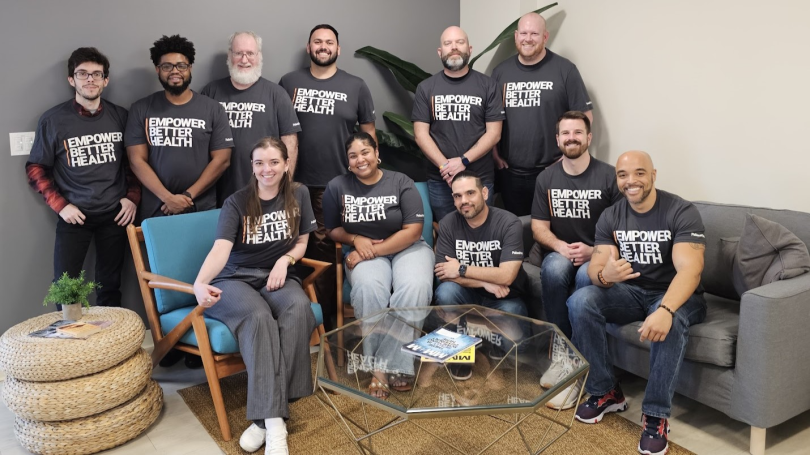
PatientPoint delivers patient engagement and care coordination solutions to improve health outcomes and patient experience.
What’s your professional background, and why were you brought on to lead this team?
For over 20 years, I’ve dedicated myself to pioneering software solutions for global endeavors, fueled by an unwavering commitment to pushing the boundaries of technological innovation. I’ve orchestrated the delivery of transformative applications to ensure that end users’ needs are not just met but exceeded. My leadership journey has taken me through esteemed organizations such as Motorola, Microsoft, Sears and PatientPoint, where I have honed my skills and expertise in driving software development initiatives to success.
In 2019, I embarked on a new chapter by joining Outcome Health, which later merged with PatientPoint in 2021. I spearheaded the development of all Outcome Health platform systems, playing a pivotal role in scaling the software organization at PatientPoint to over twice the number of talented members compared to two years ago. Currently, I hold the responsibility of overseeing all applications and backend services across PatientPoint, ensuring seamless operations and continuous innovation.
How would you describe your approach to leadership, and how do you plan on building team culture?
My leadership approach cultivates a culture of innovation. I instill a mindset of continuous learning and growth, and I prioritize activities aimed at building trust, creating an environment where we feel empowered to share strengths and areas for improvement. By leveraging each other’s capabilities, we collectively work toward achieving team goals. Additionally, I emphasize the importance of fostering connections beyond our immediate team, acknowledging the value of collaboration to drive success across PatientPoint.
We place a strong emphasis on perpetual learning and development within our teams. Everyone has dedicated time for skill enhancement and exploration. This commitment fosters personal growth, ensures that we remain ahead of the latest tech advancements and drives innovation in our projects.
A recent testament to our commitment to innovation was the successful development of our mobile device-management solution using AWS IoT technology. This initiative stemmed from a fruitful proof of concept by one of our engineers following an intensive two-week study on AWS IoT. By investing in our team’s skill set and fostering a culture of innovation, we consistently deliver forward-thinking solutions.
“By investing in our team’s skill set and fostering a culture of innovation, we consistently deliver forward-thinking solutions.”
What project are you most excited to tackle?
We’ve seen remarkable growth over the past several years, achieving a market-leading position with a network that spans more than 124,000 healthcare providers nationwide. We are constantly evaluating and refining our growth strategy, ensuring we have the absolute best talent and products as we continue to scale the business.
Reflecting on the numerous projects I’ve had the opportunity to contribute to, those over the past two years have been especially gratifying. Every day, new technologies emerge, inspiring us to push the boundaries of what’s currently possible. We developed tech that the company hasn’t seen before, blending digital advancements with human-centered experiences for revolutionized patient engagement.
Our commitment to continuous improvement extends to process optimization, using data and tools to identify systemic obstacles to team velocity and predictability. Our recent focus on enhancing sprint predictability has resulted in a remarkable 20 percent improvement, underscoring our dedication to excellence and efficiency.
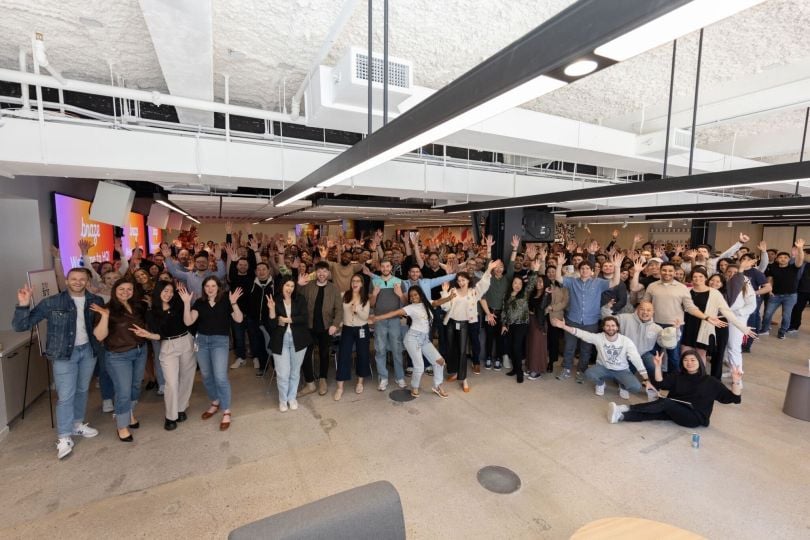
Braze is a customer engagement platform that helps brands deliver personalized messaging across various channels.
What’s your professional background, and why were you brought on to lead this team?
As an artist who transitioned into becoming an engineering and business leader, my academic foundation in fine arts has uniquely shaped my perspective on leadership and business. I began my journey in the tech industry as a customer service representative honing my skills as a technologist and eventually growing into the role of manager.
My role evolved as I served as a technical support engineer and software tester for Mailchimp, where I parlayed my experience into my final destination as an engineering leader.
My greatest fulfillment comes from mentoring and coaching; I thrive on utilizing my diverse background to promote collaboration across various company disciplines, enhancing team performance. I am committed to viewing business challenges through the lens of engineering success with my primary goal being to cultivate a culture where engineers can excel and innovate.
How would you describe your approach to leadership, and how do you plan on building team culture?
At Braze, our leadership philosophy is centered on the passion of our people and the firm belief that this is the cornerstone of our success.
As a leader, I strive to champion an environment where innovation and personal interests thrive alongside our collective ambitions. I encourage open-mindedness, where every team member can express and pursue interests both professionally and personally.
This approach not only fosters a dynamic and inclusive workplace, but also enhances our collective drive and creativity. My goal is to build a team culture of deep curiosity, continuous learning and mutual respect, where everyone is excited to share their unique passions and perspectives.
What project are you most excited to tackle?
Joining Braze is such an exciting experience as I look forward to crafting new ways for our teams to operate and build out new ways for customers to connect with their audience. Inspired by Braze’s innovative spirit, I am eager to help expand the number of communication channels available in Braze so our customers can meet their audiences where they are. What we’re working on — from crafting captivating landing pages to expanding our chat channels — will have a significant impact on Braze by enhancing our ability to deliver exceptional value to customers and strengthen our position as a leader in the marketing tech industry.
“I look forward to crafting new ways for our teams to operate and build out new ways for customers to connect with their audience.”
I’m also committed to fostering a strong engineering culture at Braze, built on collaboration, continuous improvement and the passion we all have for what we do. We really want to harness our collective expertise to drive technological innovation and deliver unparalleled value to our customers.
Overall, these initiatives will contribute to growth for Braze, but will also empower our engineering team to drive innovation and have a tangible impact through their work.
Starburst offers a fast, scalable analytics engine that helps companies access and analyze data across various platforms.
What’s your professional background, and why were you brought on to lead this team?
I studied distributed computing in grad school, but I’ve loved working on database technology for many years. The first startup I was part of, Endeca, was search technology that was built on high-performance database techniques, and since then I’ve been hooked on this technical domain. I became aware of Trino, the core database query engine technology at the heart of Starburst, because it was central to the architecture we used to build a wildly successful data lakehouse at my last company, Salsify. So I knew that Starburst was building on amazing foundations, and solving a highly valuable problem. Finally, once I got to meet the team at Starburst, I knew it was a company that was going to be huge, and I had to be a part of it.
How would you describe your approach to leadership, and how do you plan on building team culture?
I like to focus first on making sure that the team’s mission and goals are super clear and can be communicated to the team in an exciting way. After that, I like making sure that everyone on the team is lined up to play a clear and interesting role in realizing that vision, and one that aligns with their development goals and what they like to work on.
If you hire talented people, the best thing you can do to drive results is help them see clearly how they can use their talents to create value for customers and the company, all while advancing their craft along the way.
Finally, I like to set an example that it’s always better to be nice. Life’s too short for negativity, and anyway I got into software because it was fun. My mentor and hero in grad school, Bill Wulf, liked to say, “It’s better to build bridges than walls.”
What project are you most excited to tackle?
Starburst is a data lakehouse platform that provides the analytical power of a data warehouse, but on an open storage architecture that lets you run other workloads on your data instead of keeping it locked up in a closed database. It’s a huge space, with many large competitors and partners, and there’s a bewildering array of features we could add, integrations we can build and use cases we can solve.
Building a business in that kind of opportunity-rich environment is exciting, but you have to be careful about maintaining focus. It’s critical to pick a few high-value things to be amazing at and win those before expanding. Rather than any one project, the area I’ve been most excited to improve is around our process for planning new work and ensuring we have a smart and repeatable way to ground that process on a well-defined product strategy. Getting this right creates clarity for the team and sets them up for success by making sure we aren’t spread across too many projects. Also, as a scaling SaaS company, clear focus also allows us to leave healthy space for improving operational excellence, ensuring we are ready to manage our platform through the rapid growth we’re seeing.
ActBlue is a fundraising platform for Democratic candidates and progressive organizations, enabling grassroots donations.
What’s your professional background, and why were you brought on to lead this team?
I’ve been working in the tech industry for over 25 years spanning education, online media, e-commerce, healthcare and now political tech. I’ve had the fortune to experience multiple stages of companies from startup to growth to maturity, and having those experiences is what made me a good fit for leading our engineering team here.
What’s been super fun about working at ActBlue is that, as a nonprofit, our business is so much more closely tied to our mission than working at a venture-backed or publicly financed company, and I love that I get to wake up every day plying my skills toward empowering Democrats and the voices of small dollar donors.
How would you describe your approach to leadership, and how do you plan on building team culture?
I like to optimize for long-term relationships and building mission-aligned engineering teams.
I have a whole support system composed of former colleagues with whom I speak regularly, and the best man at my wedding was one of my first coworkers. I take the approach of knowing that for most folks, an organization is just a stop along their career path. I think about how I can foster an environment where folks can meet their future lifelong friends, advisors and even future co-founders. When it’s time to part ways, we can feel good about what we achieved together.
In my experience, the best proxy for individual career growth is business growth. When the business grows, you get to experience that next level of scale, difficulty and upskilling. I also think about how to create a culture where we foster the obligation to repair misunderstandings. Great teams have an ability to recognize misunderstandings and to repair them. That involves empathy, curiosity and being able to address conflict in constructive ways. All of these things build the foundation for stronger relationships and effective teamwork.
“Great teams have an ability to recognize misunderstandings and to repair them.”
What project are you most excited to tackle?
The past six or seven years prior to my joining was a real hockey stick of growth for ActBlue, and the product and engineering departments grew by a factor of ten. The team did a wonderful job scaling to meet the moment, and I’m really excited to prepare ourselves for the next decade. We know that if we want to keep up with an ever-changing technology landscape and improve our ability to serve all parts of our ecosystem, we cannot be tomorrow who we are today. We are really examining the things that are no longer serving us well, thanking those tools and methodologies for their service and taking on the challenge of embracing the future.



